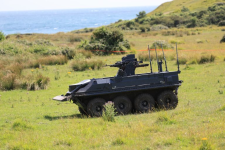The innovation cells is a weird thing; they tend to be motivated people who may or may not have actual experience in the areas they are looking at trying to create bright, new disruptive ideas, but the project scope only covers the first 5%.
At best, they work with the actual SMEs in the area, come up with something but then the projects don't follow through for delivery, so it just languishes as soon as it gets to implementation and sustainment, which is 95% of the LOE. So the working concept doesn't actually turn into a capability.
At worst, they don't talk to the SMEs, try and come up with some kind of sexy (but impractical solutions), get a lot of interest from BGHs, but then eat up a lot of resources and distract focus. For a lot of things (like welding) the improvements are pretty incremental, but for new things like additive manufacturing, there are a lot of legitimate material performance requirements they still need to meet if they make metal parts with 3D printing vice casting/machining.
We have a lot of unsexy but common obsolete, cast brass parts that cost an absolute fortune to get castings done (because we get an F U price as they don't really want to do the work) where there are no IP issues, so additive manufacturing would be awesome, but the team workign on the innovation wants to focus on complicated, very large and actually supported items we can get from the OEMs instead, when some of the things we really need would be things like drain covers and scuppers that aren't a big deal until you need to replace one and there is a hole in a deck until you do.
 steveblank.com
steveblank.com
 steveblank.com
steveblank.com





